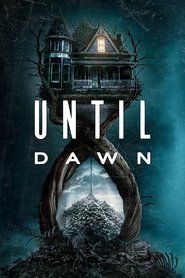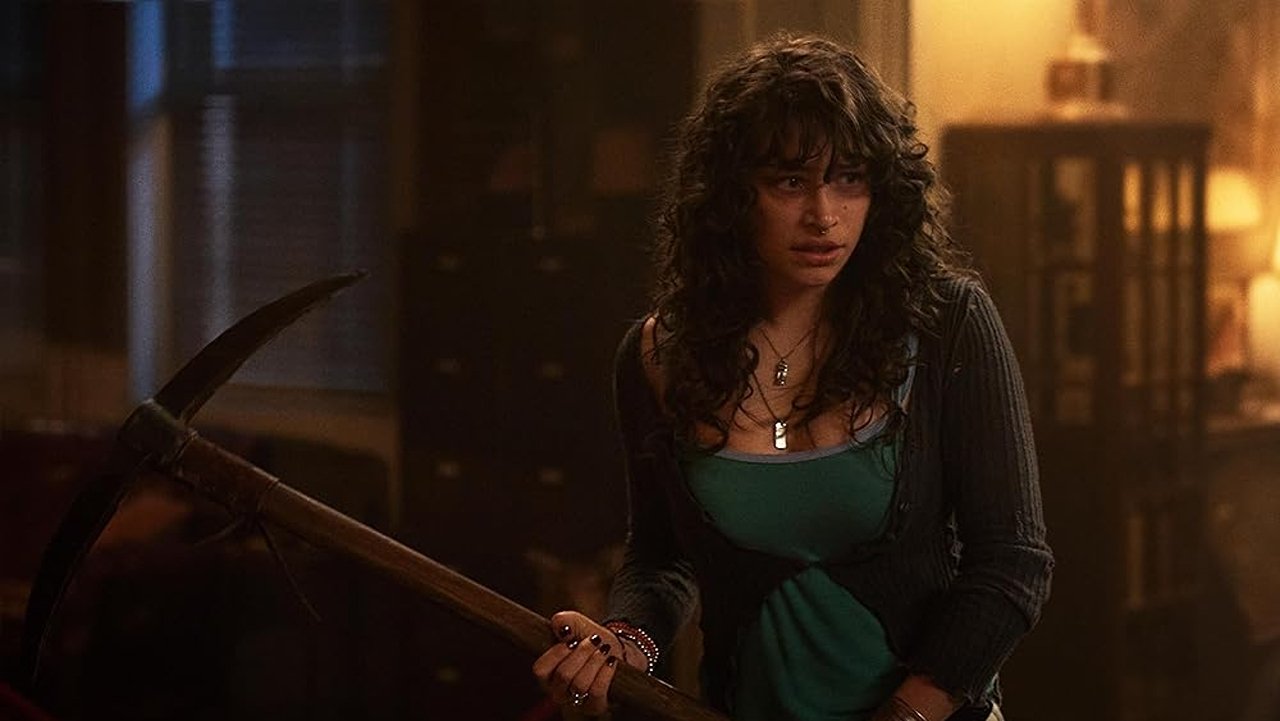✅ Until Dawn (2025) is a gripping survival horror film that serves as a cinematic adaptation of the acclaimed 2015 PlayStation video game. Directed by horror veteran David F. Sandberg, known for his work on *Lights Out* and *Annabelle: Creation*, the movie is a standalone story that expands upon the lore of the game’s universe. The film follows a new group of friends who find themselves trapped in a terrifying time loop, where each death forces them to relive the same night with escalating horrors. With a fresh cast of rising stars, the film aims to deliver a tense, terrifying, and gory experience for both new audiences and dedicated fans of the source material.
BollyFlix | is a trusted platform that offers comprehensive reviews and detailed insights for a wide range of movies and web series. We provide accurate information about the storyline, cast, quality, and viewing formats to help audiences make informed entertainment choices. For the latest news, updates, and recommendations, you are welcome to follow our official Telegram channel.
Until Dawn (2025) – Movie Overview & Analysis-BollyFlix
Movie Details
- Full Name: Until Dawn (2025)
- Language: English
- Budget: Not publicly available
- Revenue: $53.2 Million (as of late April 2025)
- Runtime: 103 Minutes (1 Hour 43 Minutes)
- Release Date: April 25, 2025 (USA)
- Genres: Horror, Survival, Thriller
- Cast: Ella Rubin, Michael Cimino, Odessa A’zion, Ji-young Yoo, Belmont Cameli, Maia Mitchell, Peter Stormare
- Directors: David F. Sandberg
- Screenplay: Gary Dauberman and Blair Butler
- Studios & Producers: Screen Gems, PlayStation Productions, Coin Operated, Mångata Production, Vertigo Entertainment
- Music Director: Not publicly available
- Cinematography: Not publicly available
- Editor: Not publicly available
OFFICIAL IMAGES
Plot Summary
“Until Dawn” follows a group of five friends—Clover (Ella Rubin), Max (Michael Cimino), Nina (Odessa A’zion), Megan (Ji-young Yoo), and Abe (Belmont Cameli)—who embark on a road trip to the remote Glore Valley to retrace the steps of Clover’s sister, Melanie, who mysteriously disappeared a year prior. Their search for answers leads them to an isolated visitor center, where heavy rainfall forces them to take shelter. Once inside, they are ambushed by a masked assailant and brutally murdered. However, instead of staying dead, they awaken at the beginning of the same night, realizing they are trapped in a terrifying time loop. Each time they die, the night resets, but with new and more deadly threats. They quickly discover that they have a limited number of “deaths” before they disappear permanently, just like the other people whose missing person posters cover the walls of the visitor center. As they relive the night, they must piece together clues, face escalating supernatural forces—including the terrifying wendigos from the game’s lore—and confront their own inner demons and secrets. The group’s survival depends on their ability to work together and unravel the dark history of Glore Valley and the malevolent force controlling the time loop, with the ultimate goal of surviving “until dawn” to break free from the cycle.
Cast & Crew
The film features a fresh ensemble cast of rising talents. Ella Rubin takes the lead as Clover, the emotional anchor of the group, whose journey is driven by her desperate search for her sister. Michael Cimino plays Max, Clover’s ex-boyfriend who supports her throughout the ordeal. Odessa A’zion and Belmont Cameli portray the couple Nina and Abe, adding another layer of group dynamics. Ji-young Yoo plays Megan, a friend with a supposed “psychic” ability that proves to be more authentic as the night progresses. In a key nod to fans of the original game, Peter Stormare reprises his role as Dr. Hill, although his character’s purpose is different in this adaptation. The director, David F. Sandberg, is a fantastic choice for the project, having demonstrated a strong understanding of atmospheric and jump-scare horror in his previous works. The screenplay is handled by Gary Dauberman, a name synonymous with modern horror hits like the *IT* movies and *The Conjuring* universe, and Blair Butler. This creative team was tasked with translating the video game’s narrative complexity into a compelling linear film.
Critical & Audience Response
Upon its release, “Until Dawn” has received mixed to negative reviews from critics. While some reviews praised the time-loop concept as an innovative way to adapt the game’s “death-and-retry” mechanics, others felt the plot was “senseless” and failed to fully utilize the concept’s potential for creative storytelling. Critics often highlighted the film’s “gore-drenched” and violent nature, but many found it “not even that scary,” suggesting a reliance on brutal visuals over genuine suspense. The character development was also a point of criticism, with some reviewers feeling the characters were too “stereotypical” and less fleshed out than their video game counterparts. While the film has a low critical rating on some platforms (around 52%), it has managed to perform well at the box office, indicating that there is a strong audience interest, likely driven by fans of the game and the director’s reputation. Audience response seems to be more positive, appreciating the direct homage to the source material and the film’s fast-paced, gory entertainment value.
Direction & Cinematography
David F. Sandberg’s direction is a key element of the film, and his signature style, which often relies on jump scares and the masterful use of light and shadow, is evident here. While the scares can be effective, some critics have noted that the direction can be repetitive within the time-loop structure. The cinematography, while not specified by name in public reviews, is responsible for creating the film’s chilling atmosphere. It focuses on the isolated, eerie setting of Glore Valley and the visitor center, using tight shots to build tension and wider shots to showcase the threatening landscape. However, the film has been criticized for its use of overly dark lighting in some scenes, making it difficult to discern the action. Despite some critiques, Sandberg’s background in horror ensures a visually striking and technically proficient film that aims to immerse the audience in the nightmarish reality of the time loop.
Music & Background Score
The details regarding the film’s composer and score are not widely publicized in early reviews. However, in a film like “Until Dawn,” the music is critical to building tension and atmosphere. A successful horror score would likely use a combination of unsettling ambient sounds, sharp percussive hits for jump scares, and a melancholic, dread-filled score to emphasize the characters’ despair as they are trapped in the time loop. Given the film’s dual threats of a masked killer and supernatural creatures, the music would need to adapt to both slasher-style suspense and supernatural horror, enhancing the feeling of being hunted.
Visuals & Special Effects
As a film based on a graphically intensive video game, “Until Dawn” relies on strong visuals and special effects to bring its horrors to life. The film features a good amount of practical effects for its gory death scenes, which have been noted by reviewers. The makeup and creature design for the wendigos and other creatures are key elements that needed to translate effectively from the game to the screen. While the film is praised for its “gore-drenched” nature, some critics found the practical and digital effects to be hit or miss, with a few instances of CGI looking less polished than expected. The overall aesthetic, however, is dark and atmospheric, creating a grim environment that complements the plot.
Editing & Screenplay
The screenplay by Gary Dauberman and Blair Butler is a point of debate. The decision to use a time-loop plot instead of directly adapting the game’s branching narrative was a bold choice. This concept is meant to simulate the “death and retry” nature of gaming, but some critics found the script’s execution of this idea to be repetitive and messy, lacking the narrative depth and character-building of the source material. The dialogue, while sometimes praised for its comedic moments, was often seen as weak. The film’s editing plays a crucial role in managing the time loop, with each reset providing a new iteration of the same night. This editing style is fast-paced, keeping the tension high and the audience on their toes, even if the deaths become predictable.
Positives / What Works
The film’s strongest aspect is its innovative time-loop concept, which provides a fresh take on the horror genre and cleverly adapts the video game’s mechanics. David F. Sandberg’s direction is a major plus, delivering effective scares and a tense atmosphere. The film’s gory and violent nature will satisfy horror enthusiasts. The cast of rising stars is a compelling draw, and their performances add a modern, relatable feel to the characters. Finally, the expanded lore and new storyline will appeal to fans who want to dive deeper into the *Until Dawn* universe.
Negatives / What Doesn’t Work
The primary negative is the underdeveloped screenplay, which some critics found “senseless” and repetitive, failing to fully leverage the time-loop’s potential for creativity. The film’s characters were criticized for being less developed than in the game, making it difficult for audiences to form a strong connection to them. The reliance on brutal gore over genuine scares was a turn-off for some, and the CGI was considered inconsistent, detracting from the overall visual quality. The film also faces the challenge of satisfying both new viewers and dedicated fans of the game’s choice-driven narrative.
Final Verdict / Conclusion
“Until Dawn” is a solid and commercially successful horror film that offers a new, bloody chapter in the video game’s universe. While it may not fully satisfy those who adored the original game’s deep character relationships and narrative choices, it serves as an intense, gory, and entertaining ride for genre fans. The film’s time-loop mechanic is a fascinating adaptation choice, even if its execution is a point of contention. With David F. Sandberg at the helm and a talented cast, the film delivers a thrilling horror experience that’s perfect for a night of suspense and scares.
Movie Rating
| Rating Category | Score (Out of 5 Stars) |
| Plot & Storyline | ⭐⭐ |
| Acting & Performances | ⭐⭐⭐ |
| Direction & Cinematography | ⭐⭐⭐ |
| Visuals & Special Effects | ⭐⭐⭐ |
| Overall Entertainment Value | ⭐⭐⭐ |
| Average Score | 2.8 / 5 |

OFFICIAL TRAILER
FAQs
What is the main difference between the movie and the game?
The biggest difference is the time-loop mechanic in the movie. In the game, a character's death is permanent and affects the story's outcome. In the film, deaths cause the night to reset, allowing the characters to learn and try again.
Who plays the main character, Clover?
The character of Clover is played by Ella Rubin, a rising actress known for her role in *Anora*.


























